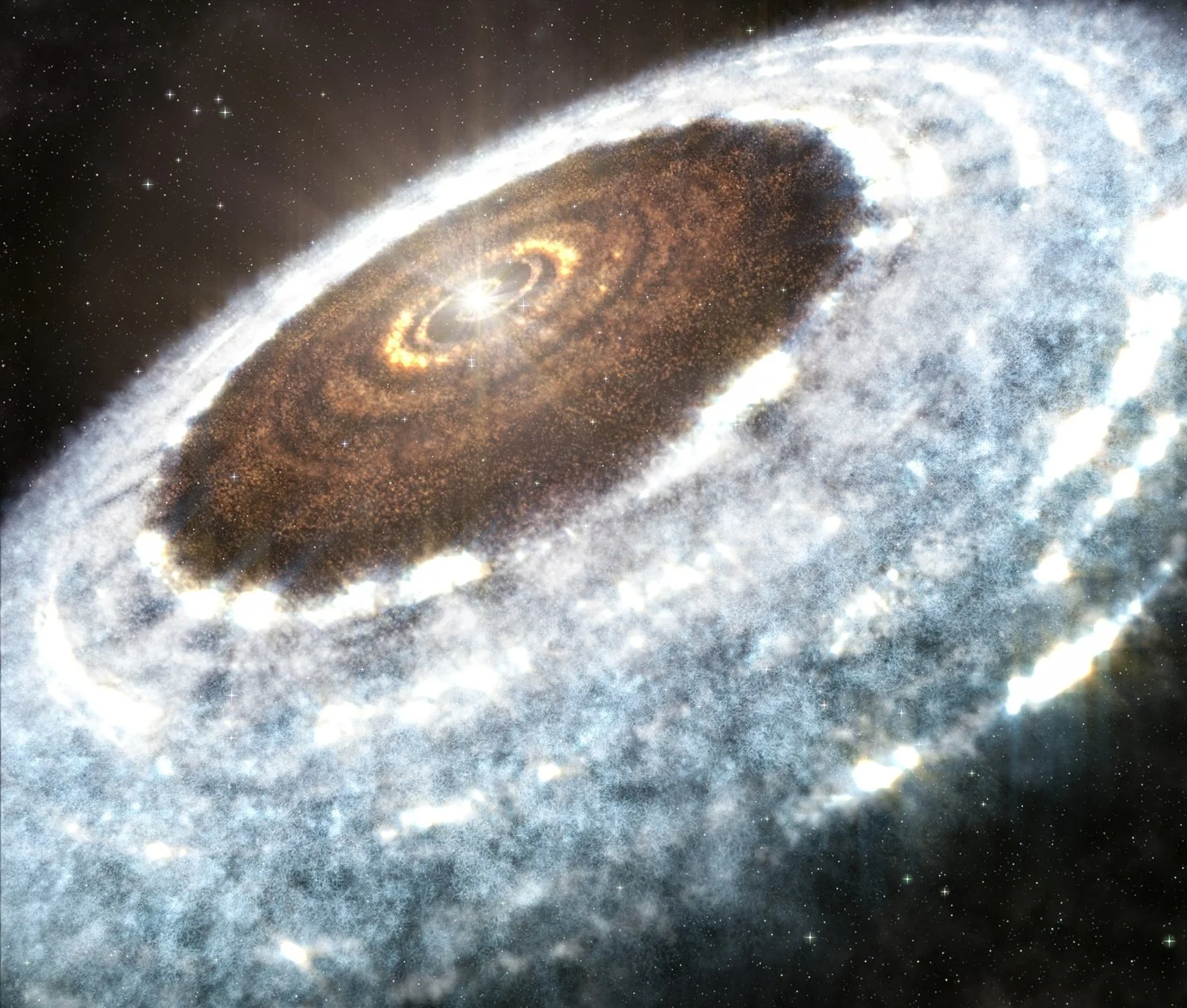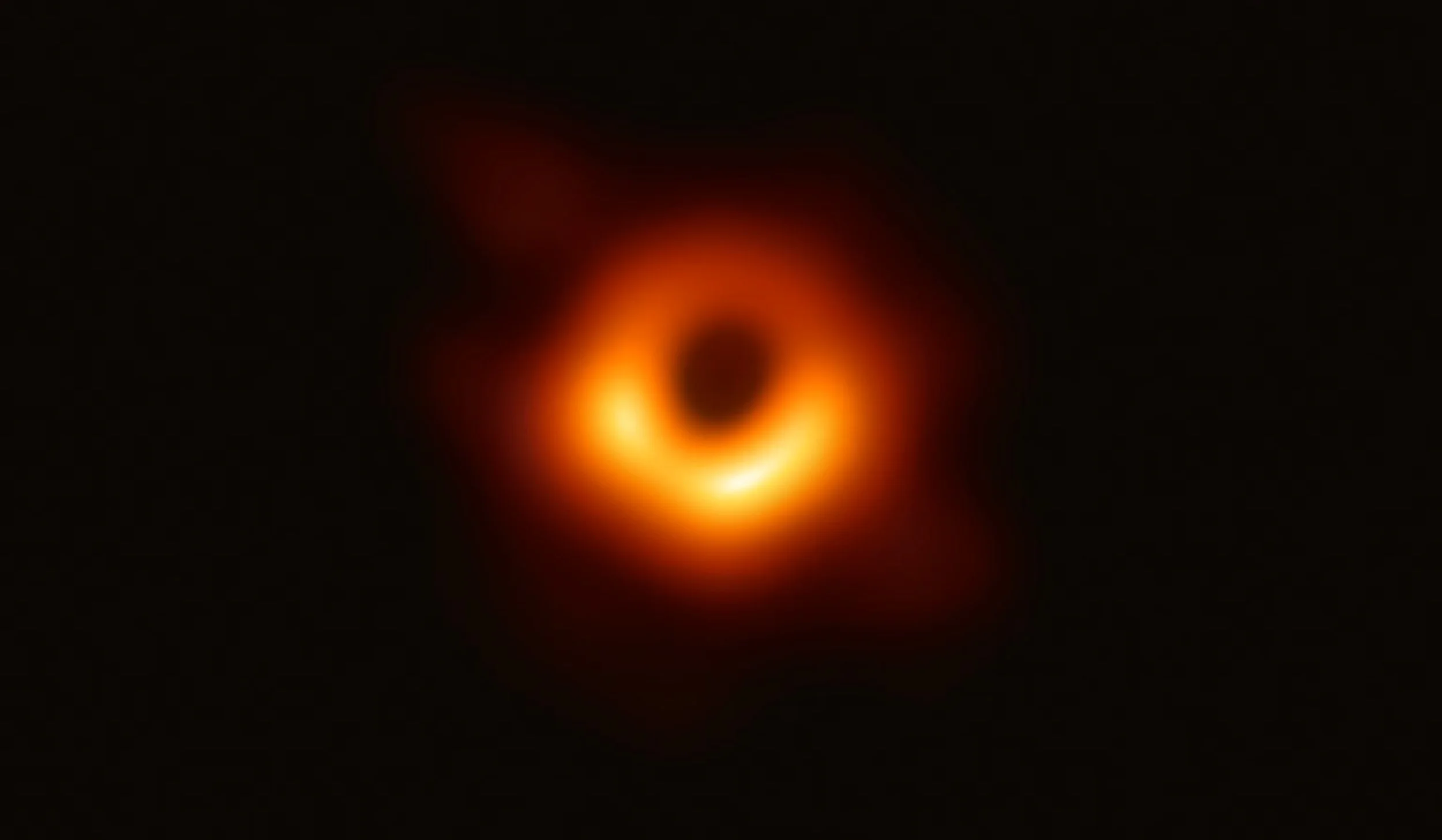Using the powerful ALMA telescope, astronomers have detected complex organic molecules (key ingredients for life) in a disc of gas and dust surrounding a young star. They published their findings in The Astrophysical Journal Letters.
This discovery raises a fascinating possibility: the building blocks of life might have formed in space long before planets like Earth even existed.
An artist’s impression of the water snowline surrounding the young star V883 Orionis, as observed with ALMA. - Image Credit: A. Angelich (NRAO/AUI/NSF)/ALMA (ESO/NAOJ/NRAO) via ESO
Researchers at the Max Planck Institute for Astronomy (MPIA), led by astronomer Abubakar Fadul, have detected molecules such as ethylene glycol and glycolonitrile in the region surrounding the young, planet-forming star V883 Orionis.
Glycolonitrile is especially interesting because it's a direct precursor to amino acids such as glycine and alanine, which are fundamental components of proteins and DNA.
“Our finding points to a straight line of chemical enrichment and increasing complexity between interstellar clouds and fully evolved planetary systems,” said Fadul.
The Unexpected Survival of Life's Building Blocks
Previously, scientists believed that the turbulent process of star formation might destroy delicate chemical compounds.
MPIA scientist Kamber Schwarz explains that their new research shows the opposite might actually be true: "Our results suggest that protoplanetary discs inherit complex molecules from earlier stages, and the formation of complex molecules can continue during the protoplanetary disc stage."
Instead of being wiped out, the conditions around forming stars might actually nurture the molecules necessary for life.
This artist’s impression shows the planet-forming disk around V883 Orionis. In its cold outer regions, volatile gases freeze into ice, trapping complex organic molecules. A burst of energy from the star heats the inner disk, causing the ice to evaporate and release these molecules—allowing astronomers to detect them.
The inset displays the chemical structures of several detected or suspected organic molecules: propionitrile, glycolonitrile, alanine, glycine, ethylene glycol, and acetonitrile.
Image Credit: ESO/L. Calçada/T. Müller (MPIA/HdA)
Heating Up to Reveal Hidden Molecules
Organic molecules usually form in extremely cold environments, frozen onto tiny dust grains. Typically, they're difficult to detect because they remain locked within ice. However, powerful energy bursts from young stars like V883 Orionis can heat these icy particles, causing the molecules to evaporate and become detectable.
“These outbursts are strong enough to heat the surrounding disc, releasing the chemicals we have detected,” explained Fadul. The ALMA observatory, located high in Chile’s Atacama Desert, is especially effective at detecting these faint chemical signals.
Although this discovery is promising, there’s still much work ahead. “We still haven't disentangled all the signatures we found,” said Schwarz. “Higher-resolution data could confirm these detections and possibly reveal even more complex chemicals.”
Sources, further reading and more interesting articles in Space & Exploration:
A deep search for Ethylene Glycol and Glycolonitrile in V883 Ori Protoplanetary Disk - (The Astrophysical Journal Letters)
Why extraterrestrial intelligence is more likely to be artificial than biological - (Universal-Sci)
How Large is the Universe? - (Universal-Sci)
If the Universe Is Expanding, What Is It Expanding Into? (Universal-Sci)
Too busy to follow science news during the week? - Consider subscribing to our (free) newsletter - (Universal-Sci Weekly) - and get the 5 most interesting science articles of the week in your inbox
FEATURED ARTICLES:







